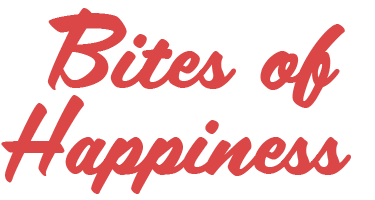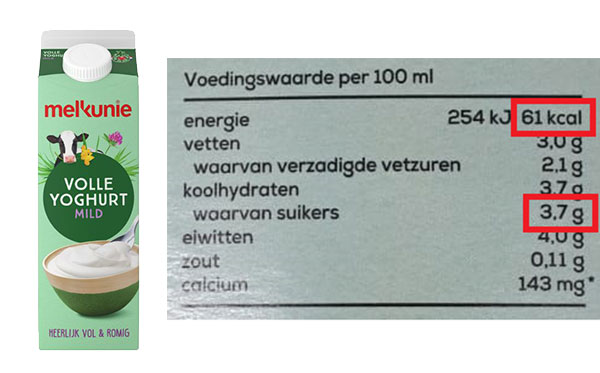Food packaging can help you choose the right products, but sometimes it can also be confusing, for example because of appealing claims.
Nutrition facts table
The nutrition facts table lists the energy (calories) and sugars the product contains. This table can help you make better decisions, for example when choosing between two types of yoghurt. But how do you know what is the best choice? Take the three-step approach: grab, turn around and choose.
1. Grab
Grab two similar products, for example two types of yoghurt.
2. Turn around
Turn them around and check the nutrition facts table, which shows you how many sugars and calories they contain per 100 g or 100 ml. This allows you to easily compare products. ‘Energy’ shows you the calorie content in kcal. The sugar content is given in g.
Step 3: Choose
Go for the product with the lowest amount of sugars and calories.
This video shows you how different two seemingly similar products can be, for example yoghurt and muesli. So choosing the healthier option will already drastically reduce your sugar and calorie intake.
Many of these drinks contain a lot of sugar, even more than soft drinks. On this page of the Netherlands Nutrition Centre you can find a clear overview. The drinks that don’t contain any sugar are the Wicky and Sourcy flavoured water. These drinks are also quite expensive considering they’re just flavoured water. You can easily make it yourself, for example by drinking water with a slice of orange, lemon or other fruit in it, even if they’re frozen.

How to compare product labels: an example
Let’s take yoghurt. This may seem a healthy snack or dessert, but not all yoghurt is the same.
Click on the image for a larger version. Nutrition values are per 100 gram/ml
Conclusion
At first sight, all these products seem very similar. They are all different types of yoghurt. But if you have a closer look at the nutrition facts tables, you can see some big differences.
- The vanilla yoghurt contains three times as much sugar as the full-fat and low-fat yoghurt.
- The low-fat yoghurt contains the lowest amount of calories and sugar.
- The vanilla yoghurt contains twice as many calories as the low-fat yoghurt.
What’s true and what’s not?
Product labels often come with lots of appealing statements, which we call claims. Sometimes they are true, but often they are not. These claims are printed on the label to encourage you to buy the product.
How come? Often these light products have additional ingredients other than fat, for example sugar. An example are crisps.
For more tips on how to read food labels have a look at the website of the Netherlands Nutrition Centre:





